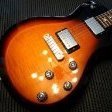Leaderboard
Popular Content
Showing content with the highest reputation on 12/27/2020 in all areas
-
It probably has to do with the timing of the two commands. I'm not sure what the gap needs to be, but I believe there needs to be one, otherwise, I'm not sure the CC69 command will get though. As far as the snapshot that's active when you load the preset, it's always going to be whatever snapshot was active when the preset was last saved.1 point
-
Try one of the device reset procedures listed here: Some of these procedures will reset your Global Settings and/or IRs/presets. Since your device is not starting up at the moment you have no opportunity to make a backup. Hopefully you have recently made a system backup (e.g when you updated to v3.01) so once you get it started up again you can restore whatever portions of the backup that you need. Start with the least destructive reset options. As a last resort, start in Update mode and use the Line 6 Updater program to reinstall the firmware.1 point
-
Thanks for the video - it sounds good to me. If not on pair, very close to what I get from the G-System now.1 point
-
macOS Big Sur disconnects after about a minute, but only if the HX Edit window looses focus. If you go away from HX Edit to another window, but get back within about a minute, it doesn't disconnect. I don't recall this behavior in Catalina. So I think this is an issue with Big Sur.1 point
-
If you want sample rate other than 48 kHz (and I would definitely want 44.1), you need the Helix Driver: https://line6.com/software For El Capitan you need driver v1.0.7, otherwise v1.0.9 And while you're at it, get HX Edit v3. And if you haven't updated the Stomp firmware to v3.01, do so from HX Edit as well.1 point
-
Don't use a Hub Do use a USB 2.0 port Try a different port If you're using a desktop use one of the ports on the rear Try a different USB cable Make sure your computer's Power Plan is set to Performance In Device Manager check that all USB Hubs' Power Management setting does NOT allow the Hub to turn off to save power Uninstall and reinstall HX Edit Make sure that the HX Edit version is v3.0, and that the Helix is on v3.01 Beat your computer severely with a baseball bat1 point
-
Quote of the month! In fact- in most cases It's not the modeler, or the speakers either. Its "people"..., That group always throws a wrench in the works. Get rid of them and enter toneful bliss.... ; )1 point
-
THIS^^^^ is one of the most misunderstood areas in modeling regardless of what setup you're using as an output method. And you're exactly right as far as placement and your own positioning can make a huge difference. And it all really comes down to a lack of understanding about the differences in what an output system is designed to do. With PA style powered speakers floor placement can suffer from bass coupling unless your speaker provides DSP facilities for correcting it. Even when placed upright on a pole, PA speakers will sound harsh if you're too close to them simply because they're made for projecting over long distances. This is why you don't want to stand in front of a FOH PA system either. But with about 6 feet of distance it will sound more normal. The good news is that because they're designed with a very wide sound cone, you can stand quite a ways off axis and the sound won't change. Studio monitors are even more susceptible to placement problems and suffer greatly if not placed correctly relative to walls and the position of the person listening to them because that is what they're designed to do as reference monitors. Headphones run the full gamut of problems depending mostly on who they're marketed to. So many headphones are designed for recorded playback which causes them to add inappropriate tone coloration to live performance music. Even going through a traditional amp 4CM can be a problem depending on the amp and how the manufacturer has designed it in terms of signal level input. Beyond that it will also suffer from the same things they've always suffered from which is the listener's placement relative to the speaker cabinet for the same reasons that mic placements have such a tremendous influence on their sound. What I never imagined is how many people have such a limited amount of knowledge about the different speaker characteristics, so they naturally place the blame on the modeler...which really has little to do with it.1 point
-
Well, when it comes to the PC, be prepared to spend time tweaking like you do with the Helix. What I have come to learn with the PC and the Helix is that the tonal options are huge, so expecting it to land on what you like is not realistic. You need to spend time with it. I had two PC112s and sent them back because I had spoken to a few people on the forums that suggested what I was going for might be better produced with the PC212. Got the 212 and have had it a couple of weeks and have spent some time with it. Still working on getting to fit in just right. However, I do see some promise with this unit. Here are some things I discovered and if anyone here has a different approach or I am doing something wrong....all advice welcome! When you get the PC make sure you first download the latest firmware update. Turn off. Turn back on. Make sure you download PC Edit (If you are using Helix into PC via L6 Link, you will not need much of PC Edit, but will need it to load IRs. If you are not using L6 Link and going into PC with XLR or 1/4 inch, then you need to be storing your presets in the PC and controlling changes through MIDI). First big learning curve- getting the right gaining stages to drive the PC. The jury is out on this one as many here have different ways of doing this. Below is one way: You can leave the PC as is. That is don't adjust any of the levels on the PC and just use the Helix. If using L6 Link. In Global Settings on the Helix have the Master Volume on Helix for digital turned OFF. (This is like having the big Volume Knob always all the way up). Use only the Amp Channel Volume to drive the PC and perhaps bring up the Output Block as needed. You could default to 0.0db and add in a +3db boost if you like. If you can get the PC to move from green and into the orange with perhaps an occasional dip into the red, then you have a really good signal to the PC. You do not want it pushing into the red easily, but you do not want it staying in the green either. Another way of doing this is how I am finding is working best for me, but I have not tested all of the presets I will be using to see if this works without too much volume variation: Using FRFR, Speaker and IRs If using L6 Link, control everything through the Helix. PC Edit to load IRs. No need to save presets as the Helix will call up your PC settings as stored in the preset through the Helix. If using XLR or 1/4, then extra steps of storing and possibly assigning MIDI will be required. If wanting to use FRFR in a preset and even within a snapshot within that preset, pick your cab or IR model in the Helix and that is what will be sent to the PC. This usually sounds good as is. May need to adjust ch volume or output block. Keep all of your Helix settings as you normally would when listening to studio monitors. Speaker mode in the PC for me, as many have stated, are mediocre. Some of the models are okay, but not as good as bringing in your own IRs IMHO. Choose IR mode and load in some IRs. What are good IRs for the PC? Matter of preference really, but I have found that the Redwirez are really the best for the PC IMHO. Don't know what it is about them, but there are some really good options there. I own Ownhammer, Live Ready Sound, Celstion, Sun City, Arcadia. I use all of these in the Helix and only some Ownhammer and Live Ready Sound in the PC. Redwirez are showing up in the PC pretty much all of the time for me now. You can get the free Redwirez GM12 pack from their Big Box set to try them out. Definitely worth the effort. They just sound like a real speaker in the room. Some of the Allure IRs already loaded in the PC are also not bad. Here is where the debate is. A lot of people keep the PC speaker levels at -18db and increase the gain staging from the Helix. All fine and good, but I find that the speakers in IR mode sound muffled and off in the distance even when you bring up any gain staging in the Helix. We are used to having our amps do all of the work to push a cab. In analog world, yes, that is what we do, but in digital world, the speakers have the options of being increased in volume. What I do is bring the speaker levels up in IR mode. I usually bring it up between -12db and -10db. When I do this, the PC input goes into the orange and sometimes dips into the red, but only when really picking hard. This sounds really good. The plus is that when I switch to FRFR mode, I do not have to tweak hardly anything in the Helix. However, you will need to bring up the speaker volume in FRFR mode, unless you want to lock in Ch. Volume and Output Block Volume in snapshots within the Helix. This is another way of doing this. So, do not be afraid to bring up the speaker levels in the PC. That is why there is the option to do this. I think this is really where the PC comes alive. So, all of this said, can the PC sound like an amp in the room? Yes. It can. Can it sound like a tube amp? Yes, believe it or not it can. It took me a while to get there and some people on here know the pains I went through to get here. The key is to not give up (I did a few times, but ended up with the PC again determined to figure this out). If you hate taking the time to dial in the tone, then don't get the PC. Better yet, don't even use the amp models in the Helix. Just use it as an FX processor and run it 4CM with your tube amps. Sounds great and it is usually plug and play. Of course you will also need to set up MIDI, but all things considered, it is an easier route. However, if you can spend the time with the PC and work with it in FRFR and IR mode (maybe speaker mode if Line 6 can do an upgrade) and getting both options to line up, the possibilities are endless. I have even toyed with sending the 212 back, but with the Holiday deal getting $250 off the price, I think it is worth it to just put the time in and get this working. We all won't be gigging at any usual capacity for a while, so why not take this time to dial it in?1 point
-
Ah line6 folks got right back to me no un-registration needed its will get re-registered with new owner when they register it under their line6 account1 point
-
been WAITING for a "copy all blocks" option for presets. that way I can have my 2nd input set for vocals and just copy that string into whatever guitar preset I have. copying block by block between presets is TERRIBLE! (just a suggestion :-)1 point
-
^^^ This, plus the fact that not all that many bridges are intonated well enough for fractions of a cent to be a rational concern during tuning :-) Just my .2 cents... :-)1 point
-
Well...you're certainly all over the place but you haven't given us much information about how you set up the signal chain nor the settings you applied. Try it this way: Using a Les Paul with Burstbucker Pro II pickups -> Plexi Bright model (Drive 7.0, Bass 3.7, Mid 6.8, Treb 5.3, Presence 4.1, ch vol 6.7, master vol 8.0, sag, hum, rippl 5.0, bias 6.7, bias x 5.5) -> IR Celestion Redback 212 Closed back Hi gain mix of MD421 and 121, Low cut 130, no hi cut -> parametric EQ HighCut 12.5 Khz. There are a couple of other things in that preset such as a split crossover at 650 hz and a mix of reverb and echo, but that's the basic sound. I send that through a Yamaha DXR12 for stage monitor 1/4" Line level and XLR Mic level to a Mackie board that feeds a QSC KLA12 Line Array with a DW181 sub. It has an absolutely GLORIOUS full heavy rock sound. I typically have my Helix Master volume set around 11 o'clock with this setup. Dial that in and see what you get.1 point
-
Well you seem to be one of the very few having this problem. I constantly run through a myriad of different PAs as do many others here and it all sounds great. So it's not a problem with the Helix, it's a problem with the application of the features. But your first statement there really begs the question of whether you're actually gain staging the signal at the board. Your choices on XLR to the board are LINE and MIC if that's how you're going to the board and would best be set to MIC as that will match most of the other channels on the mixing board. If going 1/4" to the board you should be on LINE, not Instrument typically. Yes there will be a difference between the strength of the signal which is why it gets gain staged using the Trim or Gain knob on the mixing board. You should adjust this to ensure you have an adequate, but not too strong signal level being processed through that channel. Generally this gets done at sound check time. The sound you get going through a real guitar amp will be different because it's not a flat response type speaker like a PA speaker. But what comes out of the PA once you mic that guitar amp will be the same as you're hearing now given the same mic and mic placement on the cabinet. So what really matters here is the cabinet/IRs you use along with the mic or mic mixes and their placement. This is the same on a modeler as it is in the real world of mic'ing a cabinet. If it's too fizzy then use a warmer mic like an R121 and back it away from the speaker a few inches or choose an IR with mic placement that's further away from the cap out toward the cone. Choice of cabinet and/or speakers can make a pretty big difference as well as some are based on Celestion speakers, some are based on Jensen speakers, some are based on Alnico Blues and so forth all of which have different sonic profiles. All of this is a standard part of taking the sound from on stage into a PA system whether it's from a real cabinet, or a modeled cabinet and mic setup. If I were you, that's where I'd start. Once you get that sorted out you can massage the small things that need to be adjusted with EQ, but let the cabs and mics do their work first. My strongest recommendation is that you watch Jason Sadites videos on building a good tone as that will probably get you further than anything we could offer here.1 point
-
As has been suggested this is a different question than what was talked about at first which was how to get a good sound on the PA, now it's getting a good sound on the studio monitors. And they're somewhat related but there's a different animal involved here which are your studio monitors. As far as MIC or LINE levels, typically on an output device LINE level signals are what is traditional whereas on mixing boards MIC level signals are traditional. That's one of the differences between the question you first posed and what you're posing now. The term "fizziness" means different things to different people so you need to be a bit more precise in what you mean. If what you're referring too is simply too brittle a sound due to too much in the high frequencies, I'd start with how you have your settings on your A5X speakers. Ideally everything should be flat meaning high shelf, low shelf, and tweeter level at 0 or 12 o'clock. To make sure you're getting an accurate reflection of what the Helix is producing they should be plugged directly into the Helix so there are no intermediate PC drivers in the way. As far as you being able to get decent sounds out of the amps and cabs, most of what's been said on this thread applies as it regards using a FRFR output device compared to traditional amp speakers. With FRFR speakers there is far greater response on the high end and low end of the frequency spectrum than what you would hear from a normal guitar amp speaker. You're going to find on full range speakers that high gain tones will sound much more brittle because you're hearing the high end of the distortion which won't be as prevalent on a guitar amp speaker. There are many ways to fix this but the easiest way is to reduce the amount of gain and distortion because with full range speakers a little bit goes a long way. I would say in general even on tradtional amps, overuse of distortion, gain, or overdrive is a VERY common problem, but on full range speakers it's overuse becomes much more obvious. Beyond that this high end shrillness can be tamed a number of ways, but the first place to start is with the speakers, mic and mic placements. Two key things are important here which are the mic's and the placement. Certain mic's like ribbon mics such as a Royer 121 will give a more rounded sound with better low end, whereas an SM57 is more of a mid range mic which has more high end in it, so you need to get familiar with the attributes of the different mics and how they affect the sound so you can choose the right mic for the sound you want. The second part is placement. The closer to the cap of the speaker, the more high end frequencies are accentuated. Usually in the real world this gets dealt with by moving the mic further away from the cap of the speaker out into the cone area. Stock speakers on the Helix don't allow this, but you can get somewhat of the same effect by moving the mic further away from the speaker through the distance parameter. You can also attenuate much of this shrillness by combining cabinets using a dual cabinet block with different speakers using different mics and distances and using a split block to mix how much you want them blended together. Once you've got your cabs, mics, and mic placements settled you can use EQ to fine tune them. You mentioned in your original post you used global EQ with a high pass filter. I'm assuming you meant a high cut as a high pass would effectively be a low cut and accentuate highs. As mentioned previously global EQ is NOT the place to be doing these things especially given you want to use different amps and ideally different cabinets all of which would require different EQ treatments, so you want to do this in the patch itself. The cabinets allow for high cuts, but those high cuts have a fairly gradual slope which means you have to start that slope much lower in order to eliminate high frequencies. Most people have learned it's better to use the Parametric EQ as one of the final blocks in you signal chain to take care of tweaking the overall frequencies. The high cut and low cut parameters in the Parametric EQ have a much steeper slope which allows you to set them higher. On most of my patches, if I need a high cut (which isn't always the case) it can range anywhere from 7Khz to 12Khz with the parametric EQ versus 4 or 5Khz on cabinet high cut. You asked the question why you can't get any good sounds when everyone else seems to be able to. The answer is simple...it's knowledge. You're not driving a Ford Fiesta anymore, you're driving a Porsche so you need to develop some additional skills and knowledge in order to get what you want out of it. The best investment you can make at this point is your time and attention to understanding as much as you can about the different type of blocks and how to best use them. I'd suggest you spend some time watching Jason Saddites excellent Helix series to gain some insight in this regard. https://www.youtube.com/results?search_query=jason+sadites+helix1 point
-
1 point
-
I think he's looking for a copy all the blocks in a path option. So if his perfect guitar sound is on one path and his mic on the other, he can just copy the Mic path and put it in a patch that already has something in the first path that he wants the exact same mic blocks in the second path. Does that make sense?1 point
This leaderboard is set to Indiana - Indianapolis/GMT-04:00







